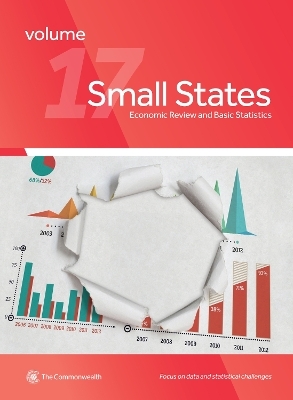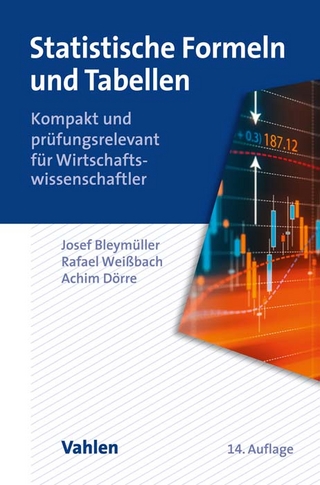
Small States: Economic Review and Basic Statistics, Volume 17
Commonwealth Secretariat (Verlag)
978-1-84929-125-5 (ISBN)
- Titel z.Zt. nicht lieferbar
- Versandkostenfrei innerhalb Deutschlands
- Auch auf Rechnung
- Verfügbarkeit in der Filiale vor Ort prüfen
- Artikel merken
This unique annual collection of key economic and statistical data on states with fewer than five million inhabitants is an essential reference for economists, planners and policy-makers. The Commonwealth’s definition of small states is those with a population of one and a half million or less. For comparison purposes this volume presents, where available, data on states with a population of up to five million.
The book contains 65 tables covering selected economic, social, demographic and Millennium Development Goal indicators culled from international and national sources and also presents information unavailable elsewhere. A detailed parallel commentary on trends in Commonwealth small states, looking at growth, employment, inflation, human development, and economic policy, permits a deeper understanding of underlying developments behind the figures.
The book also includes an article focusing on the role of data and statistics for policy making in small states.
Foreword
What Are Small States?
Abbreviations and acronyms
Part I. Recent Economic Trends in Commonwealth Small States
1. Recent Economic Trends in Commonwealth Small States
1.1 Introduction
1.2 Small states economic review
1.3 Prospects for small states’ GDP growth in 2014 and beyond
1.4 Inflation and the consumer prices index
1.5 Unemployment
1.6 International trade
1.7 Development aid
1.8 Remittances
1.9 International reserves
1.10 Foreign direct investment
1.11 Ease of doing business
1.12 Small states’ global competitiveness
1.13 Human development indicators
1.14 Regional and country analyses
1.14.1 African small state economies: a snapshot
1.14.2 Summary of developments, outlook and policy priorities in African small states
1.14.3 Asia-Pacific small state economies: a snapshot
1.14.4 Summary of developments, outlook and policy priorities for Asian-Pacific small states
1.14.5 Caribbean small state economies: a snapshot
1.14.6 Summary of developments, outlook and policy priorities for Caribbean small states
1.14.7 European small state economies: a snapshot
1.14.8 Summary of developments, outlook and policy priorities for European small states
1.15 Conclusion
References
2. The Role of Data and Statistics for Policy-making in Small States by Ryan Straughn
2.1 Summary
2.2 Introduction
2.3 Literature review
2.4 The dynamics of data challenges in small states
2.4.1 Basic data and statistical needs
2.4.2 Millennium Development Goals data gaps
2.4.3 Survey results
2.4.4 Challenges
2.4.5 Priority areas
2.5 Addressing data challenges in small states
2.5.1 Adapting NSDS approach to small countries
2.5.2 Improving data and statistical capacity in priority areas
2.5.3 Operational IT
2.6 Conclusion
Acknowledgements
References
Appendix 2.1 Data gaps from the survey results
Appendix 2.2 World Development Indicators data gaps
Part II. Social and Economic Data on Small States
Basic statistics
Technical notes for tables
Economic indicators
Table 1. Gross national income (GNI) at market prices
Table 2. Gross domestic product (GDP)
Table 3. Sectoral distribution of gross domestic product (% total of GDP)
Table 4. Growth of production (annual average %)
Table 5. GDP components (% of total)
Table 6. Prices (% change)
Table 7. Exports, imports and trade balance
Table 8. Destination of merchandise exports (% of total exports)
Table 9. Destination of merchandise exports to selected regions (% share of world exports)
Table 10. Main sources of merchandise imports (% of total imports)
Table 11. Composition of merchandise exports (% of total exports)
Table 12. Merchandise imports by selected regions (% share of world imports)
Table 13. Merchandise trade with Commonwealth countries
Table 14. Export characteristics
Table 15. Selected indicators of openness and instability
Table 16. Migration and remittances
Table 17. Fish production
Table 18. Energy production, consumption and trade
Table 19. Energy consumption and carbon emissions
Table 20. Tourist arrivals and earnings
Table 21. International reserves
Table 22. External debt: selected categories
Table 23. Total net transfers on external debt
Table 24. Principal indicators of debt
Table 25. Composition of debt
Table 26. Foreign direct investment (FDI) inflows
Table 27. Total net financial flows from all sources (US$ millions)
Table 28. Net financial flows by major categories (US$ million)
Table 29. Official Development Assistance commitments and disbursements
Table 30. Aid dependency
Table 31. Average exchange rates
Table 32. Money supply and nominal interest rates
Table 33. Doing business
Table 34. Selected private sector indicators
Social and demographic indicators
Table 35. Selected size indicators
Table 36. Population indicators
Table 37. Distribution of labour force (% of total employment)
Table 38. Labour force participation
Table 39. Urban and rural population (%)
Table 40. Land use
Table 41. Population distribution by age, actual and projected (%)
Table 42. Selected demographic indicators
Table 43. Life expectancy at birth (years)
Table 44. Adult literacy rates (%)
Table 45. Primary education level enrolment ratio (%)
Table 46. Secondary education enrolment level ratio (% gross)
Table 47. Tertiary education level enrolment ratio (%)
Table 48. Primary education gender ratio
Table 49. Selected characteristics of female population
Table 50. Total government expenditure by main components (%)
Other development indicators
Table 51. Access to improved water sources (% of population)
Table 52. Access to improved sanitation (% of population)
Table 53. Human Development Index (HDI)
Table 54. Selected characteristics of gender equality
Table 55. Selected poverty indicators
Table 56. Births delivered by skilled health personnel and maternal mortality
Table 57. Universal access to reproductive health
Table 58. Children’s health
Table 59. Under-five mortality rate per 1,000 births
Table 60. Summary statistics on HIV/AIDS
Table 61. Summary statistics on tuberculosis (TB)
Table 62. Environment
Table 63. Main indicators of internet communications
Table 64. Main indicators of telephone communications
Table 65. Transport
| Erscheint lt. Verlag | 2.6.2014 |
|---|---|
| Reihe/Serie | Small States: Economic Review and Basic Statistics |
| Verlagsort | London |
| Sprache | englisch |
| Maße | 205 x 280 mm |
| Themenwelt | Wirtschaft ► Volkswirtschaftslehre ► Makroökonomie |
| Wirtschaft ► Volkswirtschaftslehre ► Ökonometrie | |
| ISBN-10 | 1-84929-125-X / 184929125X |
| ISBN-13 | 978-1-84929-125-5 / 9781849291255 |
| Zustand | Neuware |
| Haben Sie eine Frage zum Produkt? |
aus dem Bereich


